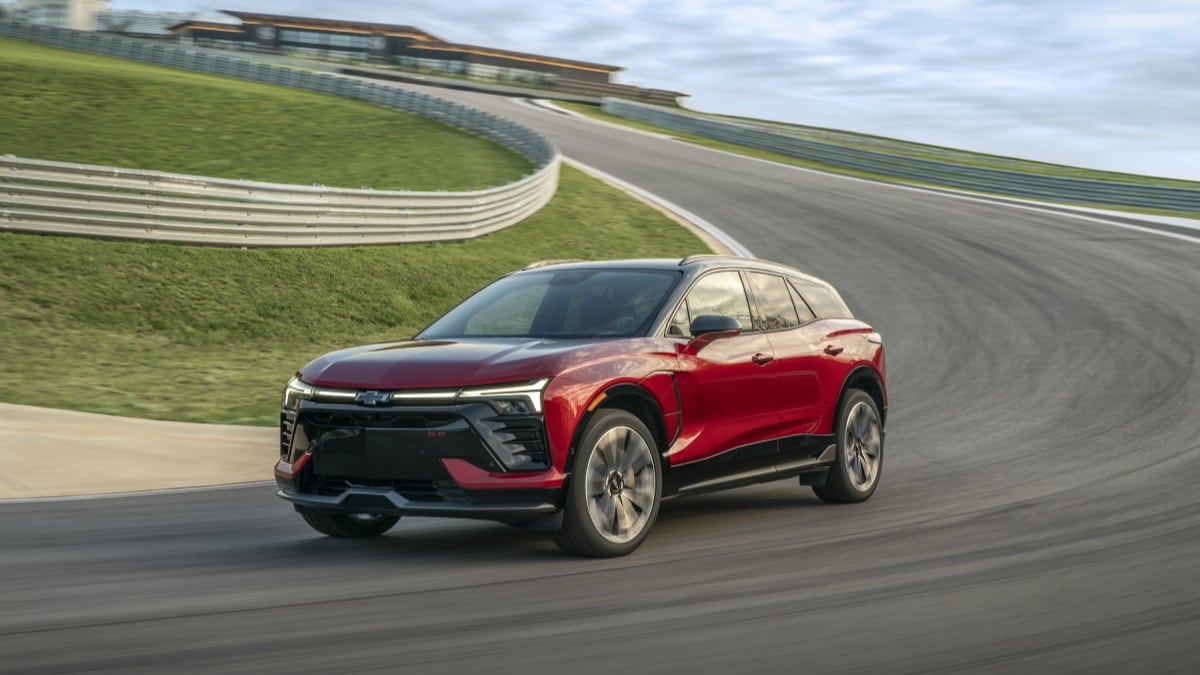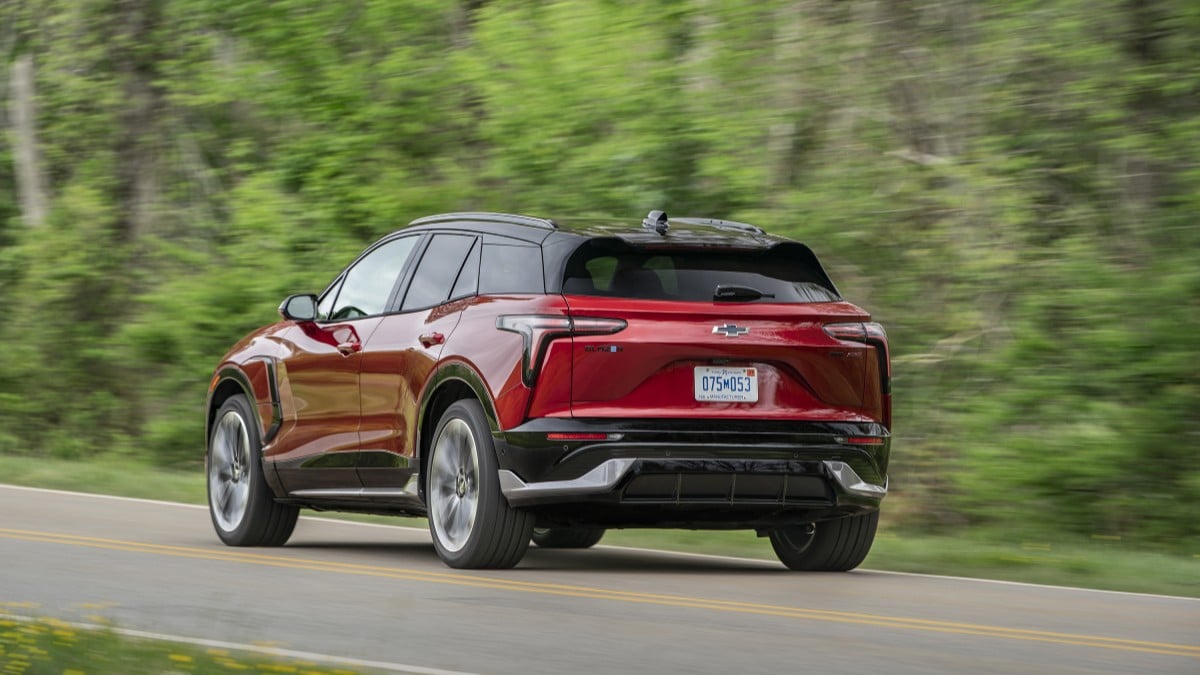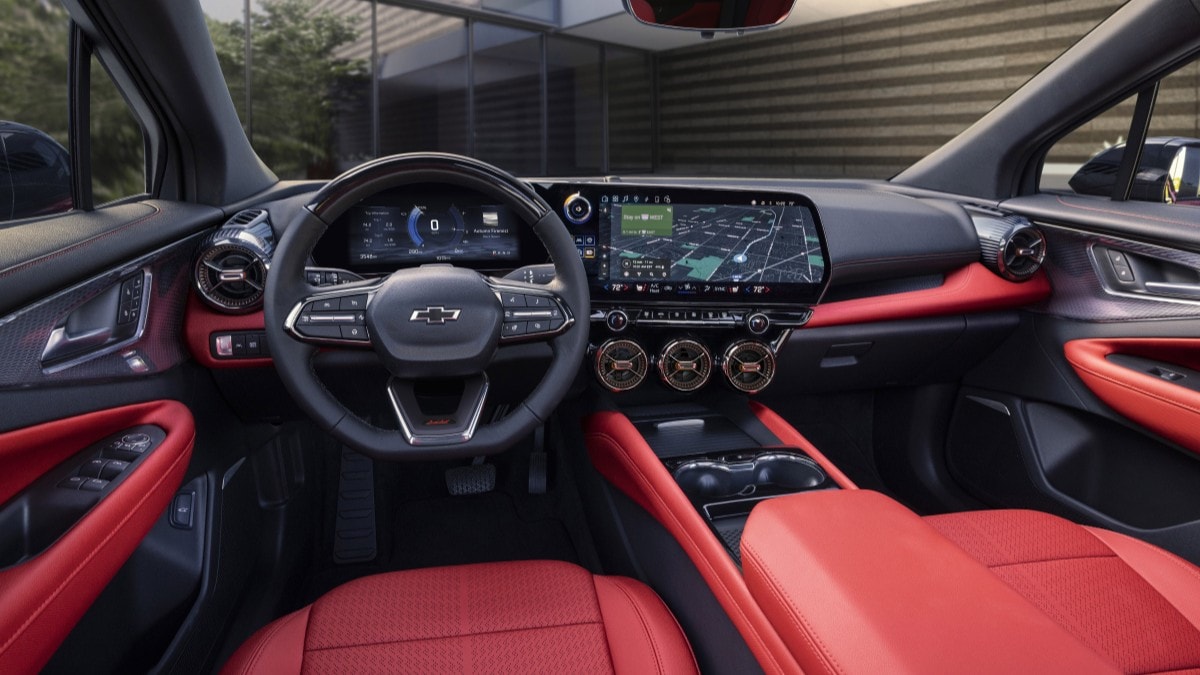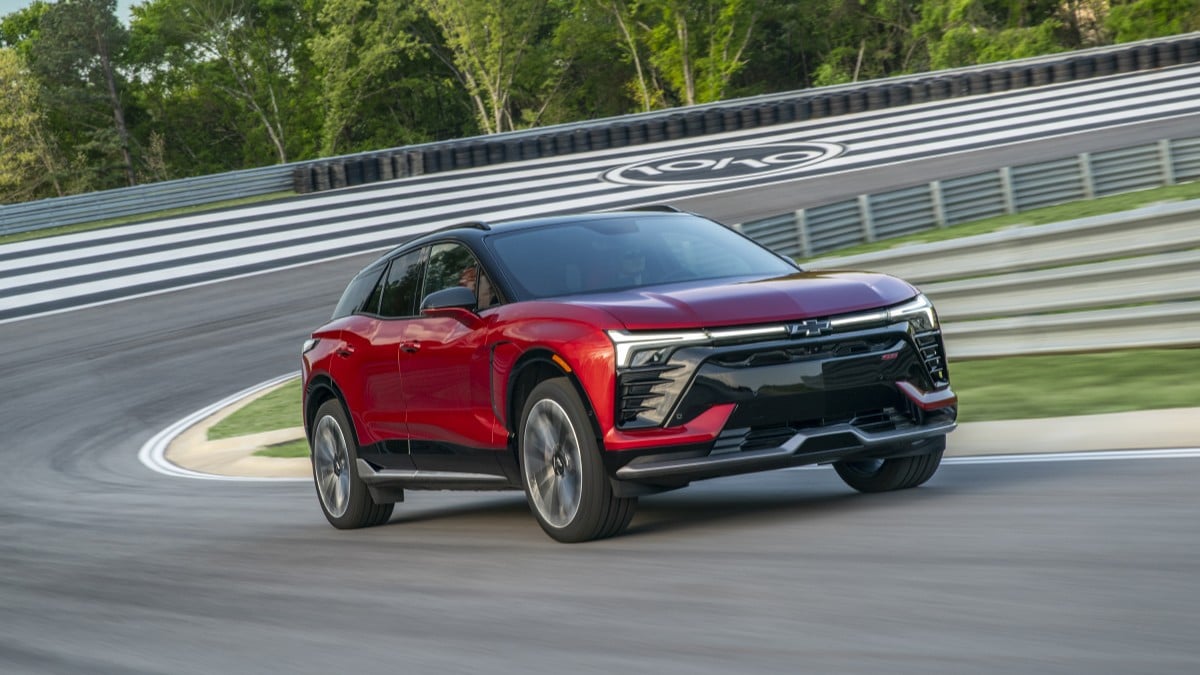The invitation would have seemed absurd five years ago. But things like this are getting routine now. Chevrolet asked me to come to a race track in early April to drive a midsize family SUV at speed through corners designed with exotic cars in mind. Welcome to the electric vehicle (EV) age.
The grocery getter from the daycare pickup line can now leap from zero to 60 in 3.4 seconds and handle a chicane with minimal understeer.
Best of all, the 2025 Chevy Blazer EV SS is almost a bargain. No, its sticker price isn’t competitive with the average car. The high-performance model Chevrolet brought to the track that day starts at $62,095. That’s well above the average new car buyer’s price last month ($49,740). But it’s not far from the price of a Blazer EV RS with all-wheel drive (AWD) and GM’s Super Cruise hands-free driving system ($59,045). This model wears the legendary Super Sport moniker and boasts 615 horsepower compared to that RS model’s 300 hp.

Driving on the Track
Few Blazer EV SS buyers are likely to find themselves with track time. If they do, they’ll likely be shocked at how poised 5,730 pounds can feel dropping out of a banked hairpin turn.
Understeer is inevitable in a vehicle this heavy. But Chevy engineers have controlled it well, with stiffer front and rear anti-roll bars, stiffer springs, and monotube dampers with front rebound springs. It stayed remarkably flat in hard cornering around the Ten Tenths Motor Club’s Short Course in Charlotte, North Carolina.
To get that exotic car-like acceleration, you have to engage WOW mode (Wide Open Watts — Chevy’s marketers did cheesy work while its engineers did hard work), which adds 100 hp and enables the launch mode.
WOW mode, incidentally, is not a temporary boost button that gives you a few seconds of added oomph. Once on, it stays on until you turn it or the Blazer EV SS off.
With it engaged, the Chevrolet blasts off like only a Ferrari did not so long ago.
Braking distance is remarkably short thanks to 15.3-inch front rotors with Brembo calipers (though you only get the Brembos up front) and 13.5-inch models in the rear.
How short? True story: On a Chevy engineer’s advice, I launched on the track. But in my own panic, I braked as hard as I could once we hit 60. I happened to do this right where the track descended into a short dip before a banking left turn. The forces combined to trigger the OnStar onboard safety system to connect me with an emergency operator to ask if I’d had a collision.
The engineer assures me that’s not typical, and it did not happen to other test runs that day. I took it as evidence of a truly impressive braking system.

Driving on the Road
Midsize SUVs, of course, are not built for that sort of driving. Thankfully, the Blazer SS is a supremely pleasant vehicle in the day-to-day driving you’re going to engage in almost all the time.
Three hundred and three miles of range between charging sessions is competitive with most midsize electric SUVs.
Chevrolet would probably prefer I praise the suspension’s cornering ability at speed, but I walked away most impressed with how smooth and composed it felt in unchallenging driving conditions.
Most EVs handle quite well — a consequence of a low-mounted, heavy battery that puts the center of gravity as low as possible. But many handle bumps, well, like they’re heavy.
I expected a high-performance version to be oversprung, stiff, and hard on the backside across hours of driving. But we took the Blazer EV SS down some winding back roads over peaked railroad tracks and on gravel, and it glided the whole time.
All that power doesn’t make the SUV seem jumpy, either. In normal drive mode, it’s a sedate driver until you punch it.
Standard Super Cruise may be the best feature of the Blazer EV SS. General Motors’ hands-free highway driving system can change lanes on its own to find a path through traffic and is smooth in operation.
One complaint: Around the Charlotte testing ground Chevrolet had set up for us, Super Cruise turned on and off frequently. The system only works on roads that GM has mapped. It was routine for Super Cruise to disengage on heavily traveled highways as though the largest routes in a major East Coast city were somehow unmapped. This will presumably get better as GM maps more of the nation’s highways.
I’m not a fan of one-pedal driving. But my drive partner, an EV owner himself, prefers it and found the Blazer’s system satisfying.

Stylish Upgrades
Inside and out, the Blazer EV SS has style. The standard Blazer EV is a sharp-looking vehicle with Corvette-inspired lines. The SS adds real, functional aerodynamic enhancements, including a cute pair of winglets ahead of the rear wheels that, engineers tell me, help create an air curtain around the rear wheels, enhancing wind tunnel performance.
The SS gets a unique front fascia with heavy use of gloss black and a few fake vents as well.
Inside, the cabin is comfortable but dominated by an immense 17.7-inch central touchscreen. Chevrolet continues to deny buyers Android Auto and Apple CarPlay (they’d probably rather gather all the data they can than let a technology company do it). However, the native navigation and streaming system mimics the usability of a phone interface well enough for most needs.
When parked, the screen plays Prime Video, HBO Max, and more. So, you can catch up on your shows while you charge.
Designers gave the interior real flair. Turbine-esque air vents and a black-and-red leather color scheme make the cabin seem as sharp as the exterior. The gray interior option might make more sense for those in sunnier climates.

Heavy Competition
Americans buy more midsize SUVs than almost any other kind of vehicle (compact SUVs are the only thing that outsold them last year). Most automakers, as they go electric, are starting with the best-sellers. So it’s no surprise that the Blazer EV has a lot of competition.
Many of those competitors have a high-performance variant. Ultra-quick versions of family vehicles will likely grow more common in the EV era, as engineers can accomplish many of the needed performance upgrades with simple code.
So the Blazer EV SS does battle against vehicles like the Ford Mustang Mach-E GT with Performance Package (which Chevrolet admits is a tenth of a second quicker to hit 60 mph) and the Tesla Model Y Performance.
With its Super Sport badge on it, Chevrolet would probably like me to tell you it’s the best performance car of the bunch. It might be. It’s the only one I’ve taken the track, so I can’t say.
Perhaps, I can give you more useful news: I have driven all three, and the Blazer EV SS is the most pleasant on a gravel road or in a traffic jam.
I like the Chevy’s sharp styling and shocking acceleration, but I’d buy it more for workaday reasons.








